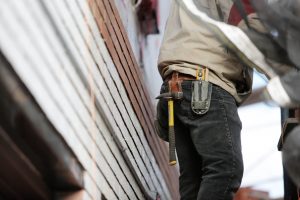3 Most Important Tools In Any Leak Detection Engineers Toolbox And Why It’s Important For You If You Are Hiring A Leak Detection Company
Aside from the skill and experience the most important thing for any worker is his tools. They speak volumes about an engineer‘s quality, precision, and speed. Traditionally when it comes to finding leaks, a plumber just uses their own gut instincts, removing flooring, plaster, and ceilings on a whim. This results in a lot of unnecessary damage to property. A qualified engineer should be able to detect leaks without damaging what covers a pipeline.
Non-Intrusive leak detection needs the following tools in order to pinpoint the exact location of a leak.
- Thermal Image Cameras
These powerful devices allow an engineer to have instant diagnostic insight by mapping out dump and warm spots on your floor or wall. Thermal cameras can scan and provide imaging through any type of surface. It eliminates the need for expensive explorative excavations to your property. This saves you from the cost and destabilization to your home and lifestyle that such extensive repair works bring.
The best thing about this camera is that it can detect small problems before they become big ones.it can also map out radiator performance and conditioning to establish shortages in the pipeline.

- Acoustic Listening Devices
When leaks occur meters underground, behind concrete and earth they can be expensive to locate. With non-intrusive leak detection, ultra-sonic listening devices are employed to pinpoint the sources of the leak. These ultra-sonic devices are popularly referred to toas Acoustic listening devices. They employ ground microphones or listening disks to listen for the sound of a leak. This sound then amplified by an acoustic amplifier, since water and gas leaks can be quite at times.
An engineer can use this device to find leaks up to 2.5 meters under the surface, eliminating the need for costly exploration works on to your property.
- Nitrogen-hydrogen Tracer Gases and sniffers
This non-toxic combination of nitrogen and hydrogen is pumped at safe working pressure into your pipeline at home. One in the pipe system the gases find even the minutest of leaks because their molecules are lighter than water. They then permeate the surface where the gas sniffers pinpoint where the gas is leaking thus the source of the leak. Using this method is the best way to find very small leaks in a pipeline.
In Summary;
ADI is committed to offering you professional, reliable and affordable water leak detection services around the clock. Please visit https://www.adileakdetection.co.uk/ for more details.